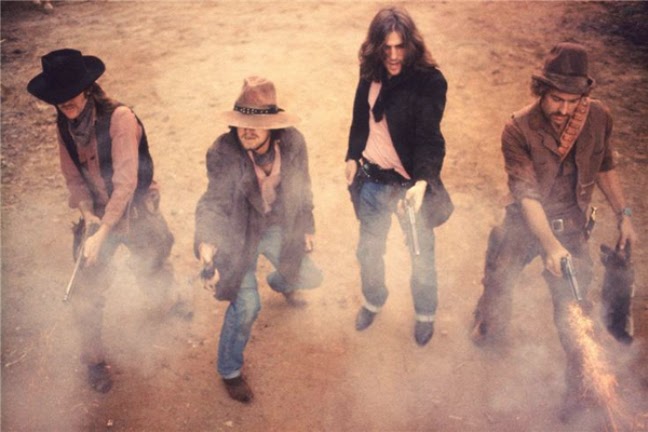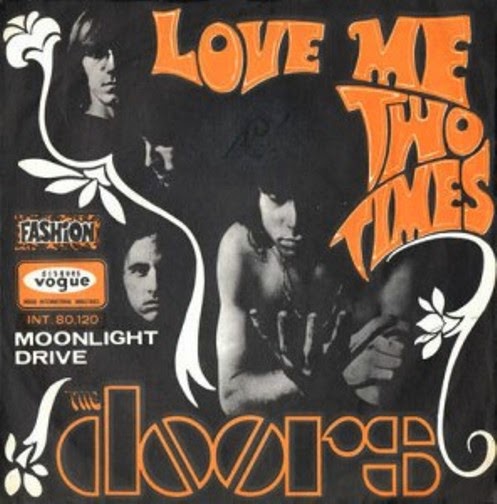The Pretenders
"Back on the Chain Gang"
Single - B-side: "My City Was Gone"
Released: Oktober 1982
Album: Learning to Crawl (Released: January 1984)
Writer: Chrissie Hynde
Label: Sire
The "picture of you" Chrissie Hynde sings about is a picture she found in her wallet of Ray Davies, leader of the band The Kinks. Hynde and Davies were a couple and had a daughter together. This song started off about him, but the meaning changed when Honeyman-Scott died. This is a very emotional song. Chrissie Hynde sometimes tears up when performing it.
The hammering sounds and the chain-gang chant heard during the chorus of the song echoes the earlier production of Sam Cooke's song "Chain Gang", released in 1960.
A Chain Gang is a group of convicts who are chained together while they do manual labor, usually outside.
"Back on the Chain Gang"
Single - B-side: "My City Was Gone"
Released: Oktober 1982
Album: Learning to Crawl (Released: January 1984)
Writer: Chrissie Hynde
Label: Sire
"Back on the Chain Gang" is a song written by Chrissie Hynde and originally recorded by her band, the Pretenders, and released as single by Sire Records in October 1982. The song was also released on The King of Comedy soundtrack album in March 1983 and was later included on the Pretenders' next album Learning to Crawl in January 1984. This was the first Pretenders single featuring Billy Bremner and Tony Butler, who replaced Farndon and Honeyman-Scott.
 |
| The Pretenders' single "Back on the Chain Gang" 1982 (Photo courtesy of Sire) |
The Pretenders - "Back on the Chain Gang" (music video)
"Back on the Chain Gang" was recorded after James Honeyman-Scott, the Pretenders guitarist, died of a drug overdose at the age of 25 on June 16, 1982. This came two days after the Pretenders fired their longtime bassist, Pete Farndon, because of his drug abuse problem. Hynde wrote "Back on the Chain Gang" as a memorial to Honeyman-Scott, and she dedicated it to him.
The "picture of you" Chrissie Hynde sings about is a picture she found in her wallet of Ray Davies, leader of the band The Kinks. Hynde and Davies were a couple and had a daughter together. This song started off about him, but the meaning changed when Honeyman-Scott died. This is a very emotional song. Chrissie Hynde sometimes tears up when performing it.
The hammering sounds and the chain-gang chant heard during the chorus of the song echoes the earlier production of Sam Cooke's song "Chain Gang", released in 1960.
A Chain Gang is a group of convicts who are chained together while they do manual labor, usually outside.
 |
| The Pretenders' album Learning to Crawl, 1984 (Photo courtesy of Sire) |
The Pretenders - "Back on the Chain Gang"
(from the album Learning to Crawl, 1984)
In an interview with Guitar Player in 1992, George Harrison claimed that "Back On The Chain Gang" utilizes a chord that he had "invented" and incorporated into the Beatles song "I Want to Tell You": "That's an E7 with an F on top and I'm really proud of that because I invented that chord… There's only been one other song, to my knowledge, where somebody copped that chord - Chrissie Hynde and the Pretenders on 'Back On The Chain Gang.'"
In 1995, the American singer Selena recorded a Spanish-language song "Fotos y recuerdos" using the melody of "Back On The Chain Gang".
Line-up / Musicians:
Chrissie Hynde – vocal, guitar
Martin Chambers – drums
Billy Bremner – lead guitar
Tony Butler – bass
Links / Reviews:
Wikipedia: Back on the Chain Gang
Songfacts: Back On The Chain Gang by The Pretenders












